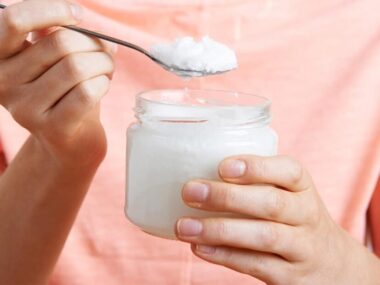Although yeast infections are typically associated with women, they can also affect men. The word “yeast infection” typically refers to a vaginal infection brought on by the yeast Candida albicans; other Candida species, such as C. glabrata, C. parapsilosis, C. tropicalis, and C. krusei, are less frequently associated with this term. But candidiasis, or yeast infections, can impact different parts of the body. For instance, thrush, or oral candidiasis, is the term for a yeast infection of the mouth, and cutaneous candidiasis is the term for a yeast infection of the skin, such as that seen in the armpits and groin. Candidal (or candida) balanitis, often known as balanitis thrush, is a yeast infection of the penis. The condition known as “balanitis” is an infection of the glans penis, or penis’s head. More frequently than any other infectious agent, Candida affects the glans penis. Candidal balanoposthitis is the term used when the yeast infection also affects the foreskin.
Prevalence of Candidal Balanitis, a Yeast Infection of the Penis
Candida yeasts are responsible for 30 to 35 percent of all cases of balanitis. Staphylococci and streptococci bacteria, the Herpes simplex and human papillomavirus, as well as the sexually transmitted bacterium Mycoplasma genitalium, are other pathogenic causes of balanitis. Even though candida balanitis is believed to be a rare condition, its prevalence in men is unknown due to a lack of research. Numerous Candida species, most notably C. albicans, may exist in the GI tract and other warm regions of the body without harming people (they only become a problem when they are present in huge numbers). In reality, 20% of women have Candida living in their vagina yet show no signs of a yeast infection. According to research, between 16 and 26 percent of males have the yeast, which is frequently detected on the penis. According to a research, 27% of men with Candida report no symptoms, whereas 37% go on to develop balanitis.
Causes and Risk Factors of Candidal Balanitis or Penile Yeast Infection
Contrary to vaginal yeast infections, penile yeast infections are typically contracted through sexual activity, namely when a male engages in intercourse with a person who is infected. But because candidal balanitis can infect men without having sex, it is not regarded as a sexually transmitted disease (STD). Men are more likely to develop penile yeast infections due to a number of risk factors, such as:
- Antibiotics, which kill the “good” bacteria that keep Candida’s numbers in check
- Immune-suppressing illnesses, particularly HIV
- Diabetes mellitus (aka diabetes)
- Corticosteroids
Additionally, men with uncircumcised penises are more likely than men with circumcised penises to develop Candida yeast colonization and infection (yeast growth is encouraged by the warm, moist environment beneath the foreskin). According to one study, having diabetes mellitus and being over 40 years old were both substantially linked to candidal balanitis. Additionally, males over 60 were more likely than younger men to have Candida colonization. The development of candidal balanitis may also be influenced by hygiene. Using fragrant soaps and shower gels might irritate the skin and even encourage Candida to grow.
RELATED: 7 Natural Cures for Erectile Dysfunction for 2023
Symptoms of Male Yeast Infections (Candidal Balanitis)
Common symptoms of candidal balanitis include:
- Burning and itching around the head of the penis, which worsens after having sex
- Redness and swelling
- Small, rash-like bumps called papules, which may have pus
- Pain during urination or sex
If you have candidal balanoposthitis, you may also have:
- A thick, lumpy discharge under the foreskin
- An unpleasant odor of the foreskin
- Difficulty pulling back your foreskin
Men with diabetes may exhibit more severe symptoms, such as fluid retention, penile ulcers, and foreskin fissures. Balanitis complications are uncommon, although they can include cellulitis (infection of connective tissue beneath the skin), the inability to retract the foreskin, and a constriction of the urethra that makes urinating challenging.
Treating Penile Yeast Infections
Penile yeast infections are simple to treat with azole antifungal medications, just as vaginal yeast infections. Numerous over-the-counter and prescription topical medications are readily available, including:
- clotrimazole (Lotrimin)
- miconazole (Monistat)
- econazole (Spectazole)
To significantly reduce inflammation, these medications may occasionally be coupled with hydrocortisone (Solu-CORTEF). Importantly, latex condoms cannot be used with topical oil-based medications. For more severe yeast infections, fluconazole (Diflucan), an oral azole drug, works well as an alternative. Make sure to follow up with your doctor if the topical or oral treatments are unsuccessful since you might have a different type of balanitis or an infection caused by a Candida species that is resistant to azole antifungals.





